FORM 4 GEOGRAPHY 2016 Answers
PART ONE: MULTPLE CHOICE QUESTIONS – Circle the correct answer
| 1 | A |
| 2 | B |
| 3 | C |
| 4 | A |
| 5 | D |
| 6 | D |
| 7 | B |
| 8 | C |
| 9 | B |
| 10 | A |
PART TWO: STRACTURAL QUESTIONS – Answer all questions in this part
1) A) Solar system: the sun and its nine planets that revolve around it
B) Hottest Planet: Mercury
C) Label planets Marked in 3, 5 and 7
3. Earth
5. Jupiter
7. Uranus
2) According to the given diagram
-
- Solar eclipse can take place when position of moon is likely to be at B
- Lunar eclipse can take place when position of moon is likely to be at D
- In new moon, position of moon is likely to be at C
- In full moon, position of moon is likely to be at A
- In half moon, position of moon is likely to be at B / D
3) Studying the map and answer questions related
A) Change relative scale 1:100,000 into written scale = 1cm to 1km
B) Distance between Garowe and Galkayo 24cm on the map, calculate their distance on the ground in Km if MS is 1:1000,000 = 24 x 10km = 240km
C) Alula is the capital city of Guardafui Region in Puntland
Buuhoodle is the capital city of Ayn Region in Puntland
4) Names of Oceans according to the world map given
-
- A. Pacific ocean
- B. Atlantic ocean
- C. Indian ocean
- D. Arctic ocean
- E. Antarctic ocean
5) 1. A) Climate: Average weather conditions calculated in a place for a long period of time
2. Average annual temperature is 29.580C
3. Annual Range of temperature is 31-28= 30C
4. It is likely to be an Equatorial climate
5. Rainfall distribution: Rain falls throughout the year
6) A) population density is the number of persons per unit area in a given time
B) Factors influencing population distribution:
-
- Climate: areas with moderate temperature and high rainfall has high population
- Relief: High altitude areas have low population as temperature decreases as altitude increases
- Vegetation: Dense forests are sparsely populated as they are habitat to wild animals
- Soils: Areas with fertile soil and reliable rainfall have high population as they are agriculturally productive
- Drainage: Well drained areas have high population because they support settlement and farming
- Pests and diseases: Areas infested by mosquito have low population
- Tribal conflicts: Areas with tribal conflicts are sparsely populated as people seek safety
- Economic factors: towns and mining areas have high population as they go there to have jobs
7) A) Calculating population growth rate about given data:
-
- South Africa = 25 – 15 = 10 x 100/1000 = 1%
- Bulgaria = 09 – 14 = -5 x 100/1000 = –0.5%
- UK = 11 – 10 = 1 x 100/1000 = -1%
B) Population of South Africa is growing rapidly
C) Population of UK is declining
8) A) Distinguish between
-
- Nucleated settlement: a settlement where Houses and other buildings are built close together around an important feature like a market
- Dispersed settlement: a settlement where Houses and other buildings are built far apart from one another
B) Label main settlement patterns:
A. Nucleated settlement patterns
B. Dispersed settlement patterns
C. Linear settlement patterns
9) A) Energy: Energy: power or fuel must be fed machines to drive or to a do work
B) Types of energy:
-
- Renewable sources of energy like sun, water, wave, wind power etc
- Non-renewable sources of energy like petroleum, oil, coal, uranium, etc
10) A) Minerals: chemical compounds which occur in the earth’s crust and which form the basis of rocks
B) How Somalia may have benefitted from mining minerals
-
- Earns foreign exchange: most minerals are exported and used to pay for import
- Source of employment opportunities as mining provides job to many people
- Provision of social services as mines provide amenities like schools, housing, power or health clinic to their staff and families may share with them.
- Improving standard of living: when people have jobs and access to good social services their standard of living increases
- Development of transport links: when company starts mining in an area they build roads to and from the mining site
- Development of towns: Town is developed at the mining site as labourers require to buy products from the town
- Development of related Industries: After minerals have been mined they require to be processed. This leads to setup processing and packaging factories.
- Development of skills: Mining Company introduces technology and trains people in its use. This is applied to the other fields
11) A) distinguish between transport and communication
-
- Transport: movement of goods and people from place to another
- Communication: transferring of information from one person or place to another
B) Illustrate following picture and name samples for each types of transport:
-
- A boat: water transport
- Railroad, car and bicycle: Land transport
- Airplane: Air transport
12) A) Trade: Buying and selling of goods and services between two persons, firms or countries
B) Factors affecting trade:
-
- Difference in natural resources
- Where there is large population
- Where there is high demand and supply of goods and services
- Where there is adequate and efficient means of transport and communication
- Trade restrictions can encourage or discourage trade
- Where there is trading blocs or economic unions
- Where there are good terms between countries
- Existence of aids to trade
Part three: Extended questions – answer any three questions including question three
1) Compare bush factors (emigration) to Pull factors (immigration)
| Bush factors: Removal from one country to another for the purpose of residence | Pull factors: The action of coming to live permanently in a foreign country |
|
|
2) A) Industry: Transforming organic and inorganic raw materials and refined material by chemical or chemical means into new products.
B) Four kinds of industries:
-
- Primary or processing industry
- Secondary manufacturing industry
- Tertiary manufacturing industry
- Quaternary manufacturing industry
C) Importance or significance /importance of industries:
-
- Earns foreign exchange after exportation of manufactured industries
- Develops other sectors of the economy like education, health care, etc
- Industries employ people providing them with income
- Help people to raise their standard of living
- Industries has led to diversification of the economy
- Industrial exports help in balance of trade between Somalia and her trading partners
- Industries encourage establishment and development of towns
- Industrial countries can cause self-sufficient in industrial goods
3) A) Wild animals: Plants and animals in their natural habitat as part of our natural resources
B) Main attractive areas for tourism in Somalia:
-
- Beautiful uncrowned beaches
- Warm sunny tropical climate
- Water sports like surfing and sport fishing
- Historical sites like Las geel, Zeila, Daawad, etc
- Wildlife conserved in national parks in many areas
- Famous birds and wild beasts along the coasts
- Attractive high coral reefs that block tropical oceans
- Diverse culture of inland people
C) Importance or significance of tourism to both man and the environment
-
- Earns the country foreign exchange used to finance in developing projects
- The country earns revenue through taxation and direct fee collection
- Creates employment opportunities
- Encourages development of other industries like banking, insurance and transportation
- Opens up unproductive areas for development like desert landscape
- Help people to raise their standard of living
- Tourism has led to diversification of the economy
4) A) Agriculture: Cultivation of crops and rearing livestock
B) Comparison between extensive and intensive farming
| Intensive farming | Extensive farming |
|
A. Large tract of land is cultivated
B. Cultivation is highly mechanized C. One simple of commercial crop is grown D. Small labour force is mainly utilized E. Yield per unit area is low F. income per man is high |
C) Problems facing pastoralists in Somalia
-
- Shortage of water and pasture due to long dry spell making animals to be poor quality
- Pests and diseases weaken and cause animals heavy looses
- Over stocking causes over grazing leading to severe erosion and poor quality animals
- Lack of extension and veterinary service
- Low level of education and culture leading keeping animals as prestige
- Poor pasture resulting from poor soils
- Cattle rustling which causes loss of live and destruction of property
- Inaccessibility of pastoral areas due to poor roads
- They rear indigenous cattle like zebu and boran which are poor in quality milk and meat.
- There is small local market due to sparse population
5) A) difference between forest and forestry:
-
- Forest: continuous growth of trees and undergrowths covering large tract of land
- Forestry: Science of developing and managing of forests including cultivating trees
B) Economic importance of forests in Somalia
-
- Forests provide wood fuel
- Forests provide timber used in building and construction
- Wood from planted forests is used in manufacture of papers, plywood and soft board in making furniture.
- Some plants have medical value
- Animals in the forests are also hunted for food
- Tannin, chemical substance used in raw hide treatment turning into leather
- Some forest products like frankincense provide major income
- Non wood products like fruits, vegetables, tubers, honey, etc are used as food.
- Timber is also used for making crates and boxes for transporting goods.
C) Natural factors affecting forests in Somalia:
-
- Altitude and slope: as altitude increases temperature decreases and as altitude decreases temperature increases
- Aspect: In the N. hemisphere south facing slopes are warmer than North facing slopes and in the S Hemisphere North facing slopes are warmer than south facing slopes
- Precipitation: proper tree growth can take place when there is heavy rainfall of over 1200 mm evenly distributed throughout the year.
- Temperature: Different plants require different amount of warmth, in tropical regions, high rainfall and intense heat accelerate plant growth but in temperate regions seasonal rainfall and low temperature discourage plant growth.
- Soil factors: Different types of soils influences growth of different types of soils
- Human activities: Man plays an important role in distribution of forests. He cuts down forests and in other areas he plants forests.





Recent Comments